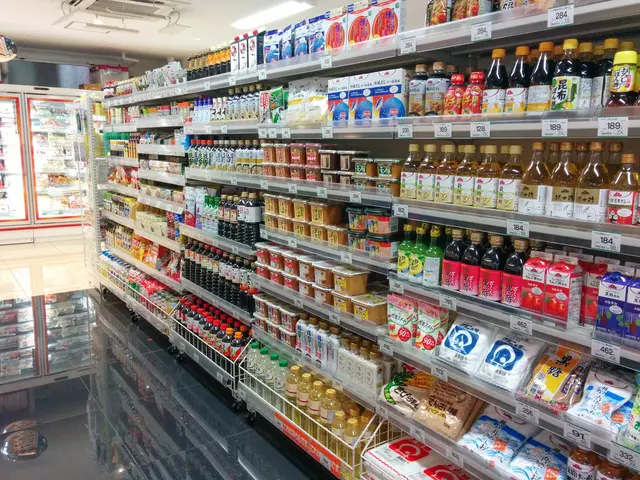The Crucial Role of Packaging in Logistics!
In the world of business, supply chain management plays a crucial role in ensuring the smooth flow of goods from manufacturers to consumers. And at the heart of this process lies packaging, a seemingly small yet significant element that can make a big impact.
Supply chain managers measure various metrics to assess the efficiency of their operations. These include the Perfect Order Index, Cash-to-Cash Time, Supply Chain Cycle Time, Fill Rate, and Inventory Turnover. One such metric, Inventory Turnover, demonstrates the speed at which a business sells its entire inventory, showcasing the effectiveness of marketing and sales efforts.
But packaging isn't just about protecting goods during transit. It can also boost sales by making products more appealing, thereby improving the Fill Rate. A well-designed packaging can strengthen supplier and retailer relationships, reducing backorders, lost sales, returns, and other stock-related issues.
Packaging can optimize supply chain management and promote sustainability in business operations. This is achieved by integrating design, material choice, manufacturing, and logistics strategies that reduce environmental impact while enhancing efficiency and cost-effectiveness.
One key way is through Sustainable Material Selection. Using recycled or rapidly renewable materials like HDPE, PET, bamboo, and cornstarch helps close the loop on resource use and lowers the carbon footprint.
Packaging Design Optimization is another strategy. Lightweight, compact, modular, and fully recyclable packaging improves logistics efficiency by reducing shipping weight and volume, thereby cutting fuel use and costs. Efficient design also minimizes waste and fits more units per shipment, further optimizing supply chains.
Manufacturing Improvements, such as upgrading machinery to handle recycled materials efficiently and employing process optimization, reduce resource consumption, manufacturing emissions, and waste, improving supply chain sustainability.
Enhanced Logistics and Distribution are also crucial. Lighter, more durable sustainable packaging reduces breakage and lowers transportation emissions through less fuel consumption. Compact packaging allows better use of storage and transport space, leading to lower shipping costs and less environmental impact.
Collaboration and Traceability within the supply chain are also essential. Working with certified suppliers of sustainable materials ensures consistent quality and ethical sourcing. Partnerships with recycling and circular economy stakeholders help close the materials loop. Emerging tech solutions like track-and-trace software also enhance product traceability while supporting sustainability goals.
Lastly, Consumer Engagement and Education play a vital role. Encouraging and promoting proper disposal and recycling educates customers, supporting circular economy principles and reducing landfill waste.
These measures not only reduce environmental impact but also improve brand reputation by appealing to eco-conscious consumers, foster customer loyalty, and can generate cost savings throughout the supply chain. Businesses that strategically implement sustainable packaging thus build resilience, operational efficiency, and long-term competitive advantage.
In conclusion, sustainable packaging not only optimizes supply chains by lowering material and transportation costs, reducing resource use, enhancing product protection, and supporting circularity, but it also advances corporate sustainability commitments. By choosing sustainable packaging options, consumers can reduce their carbon footprint and contribute to natural resource conservation. A good packaging process can even accelerate the supply chain cycle time using easy-to-source packaging materials and equipment.
Supply chain management's efficiency is assessed through various metrics, such as Inventory Turnover, which demonstrates the speed at which a business sells its entire inventory. Improving packaging design can boost sales by making products more appealing, consequently increasing the Fill Rate.
A well-designed packaging strategy can strengthen supplier and retailer relationships, thereby reducing backorders, lost sales, returns, and other stock-related issues. Sustainable Packaging Design Optimization, Manufacturing Improvements, and Enhanced Logistics and Distribution can optimize supply chain management and promote sustainability in business operations.
Collaboration with certified suppliers of sustainable materials, partnerships with recycling and circular economy stakeholders, and emerging tech solutions like track-and-trace software can enhance product traceability while supporting sustainability goals. Consumer engagement and education also play a vital role in promoting circular economy principles, reducing landfill waste, and fostering customer loyalty.
These sustainability measures not only contribute to natural resource conservation but also reduce the carbon footprint for consumers, improve brand reputation, and generate cost savings throughout the supply chain, ultimately building resilience, operational efficiency, and long-term competitive advantage.




